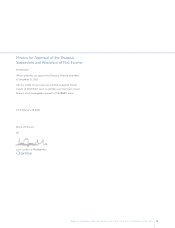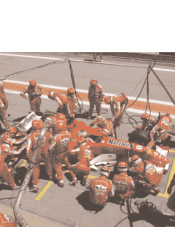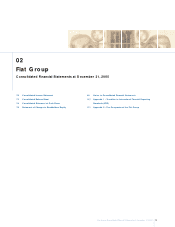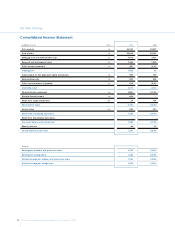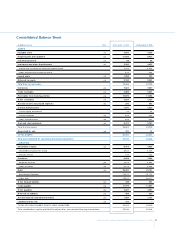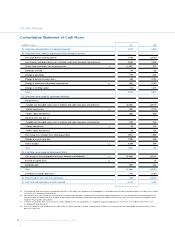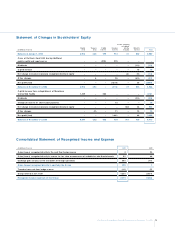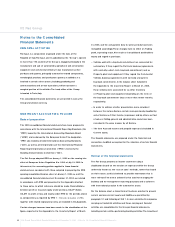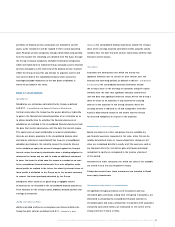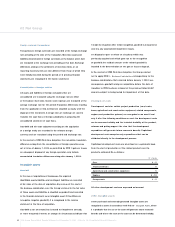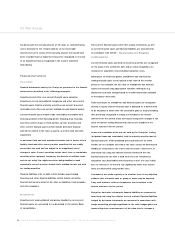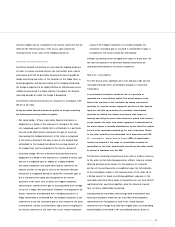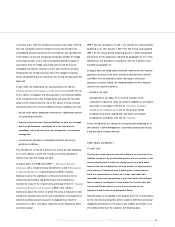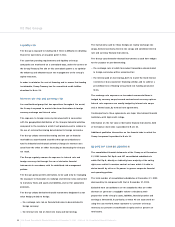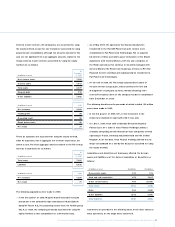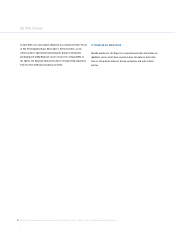Chrysler 2005 Annual Report Download - page 83
Download and view the complete annual report
Please find page 83 of the 2005 Chrysler annual report below. You can navigate through the pages in the report by either clicking on the pages listed below, or by using the keyword search tool below to find specific information within the annual report.
82 Fiat Group Consolidated Financial Statements at December 31, 2005 - N otes to the Consolidated Financial Statements
02 Fiat Group
Foreign currency transactions
Transactions in foreign currencies are recorded at the foreign exchange
rate prevailing at the date of the transaction. Monetary assets and
liabilities denominated in foreign currencies at the balance sheet date
are translated at the exchange rate prevailing at that date. Exchange
differences arising on the settlement of monetary items or on
reporting monetary items at rates different from those at which they
were initially recorded during the period or in previous financial
statements, are recognised in the income statement.
Consolidation of foreign entities
All assets and liabilities of foreign companies that are
consolidated are translated using the exchange rates in effect
at the balance sheet date. Income and expenses are translated at the
average exchange rate for the period.Translation differences resulting
from the application of this method are classified as equity until the
disposal of the investment.Average rates of exchange are used to
translate the cash flows of foreign subsidiaries in preparing the
consolidated statement of cash flows.
Goodwill and fair value adjustments arising on the acquisition
of a foreign entity are recorded in the relevant foreign
currency and are translated using the period end exchange rate.
In the context of IFRS First-time Adoption, the cumulative translation
difference arising from the consolidation of foreign operations was
set at nil as of January 1, 2004, as permitted by IFRS 1;gains or losses
on subsequent disposal of any foreign operation only include
accumulated translation differences arising after January 1, 2004.
Intangible assets
Goodwill
In the case of acquisitions of businesses, the acquired
identifiable assets, liabilities and contingent liabilities are recorded
at fair value at the date of acquisition. Any excess of the cost of
the business combination over the Group’s interest in the fair value
of those assets and liabilities is classified as goodwill and recorded
in the financial statement as an intangible asset. If this difference
is negative (negative goodwill), it is recognised in the income
statement at the time of acquisition.
Goodwill is not amortised, but is tested for impairment annually,
or more frequently if events or changes in circumstances indicate that
it might be impaired.After initial recognition, goodwill is measured at
cost less any accumulated impairment losses.
O n disposal of part or whole of a business which was
previously acquired and which gave rise to the recognition
of goodwill, the residual amount of the related goodwill is
included in the determination of the gain or loss on disposal.
In the context of IFRS First-time Adoption, the Group elected
not to apply IFRS 3 - Business Combinations retrospectively to the
business combinations that occurred before January 1, 2004;as a
consequence, goodwill arising on acquisitions before the date of
transition to IFRS has been retained at the previous Italian GAAP
amounts, subject to being tested for impairment at that date.
Development costs
Development costs for vehicle project production (cars, trucks,
buses, agricultural and construction equipment, related components,
engines, and production systems) are recognised as an asset if and
only if all of the following conditions are met: the development costs
can be measured reliably and the technical feasibility of the product,
volumes and pricing support the view that the development
expenditure will generate future economic benefits. Capitalised
development costs comprise only expenditures that can be
attributed directly to the development process.
Capitalised development costs are amortised on a systematic basis
from the start of production of the related product over the
product’s estimated life, as follows:
N ° of years
Cars 4 - 5
Trucks and buses 8
Agricultural and construction equipment 5
Engines 8 - 10
Components 3 - 5
All other development costs are expensed as incurred.
Other intangible assets
O ther purchased and internally-generated intangible assets are
recognised as assets in accordance with IAS 38 - Intangible Assets, where
it is probable that the use of the asset will generate future economic
benefits and where the costs of the asset can be determined reliably.



